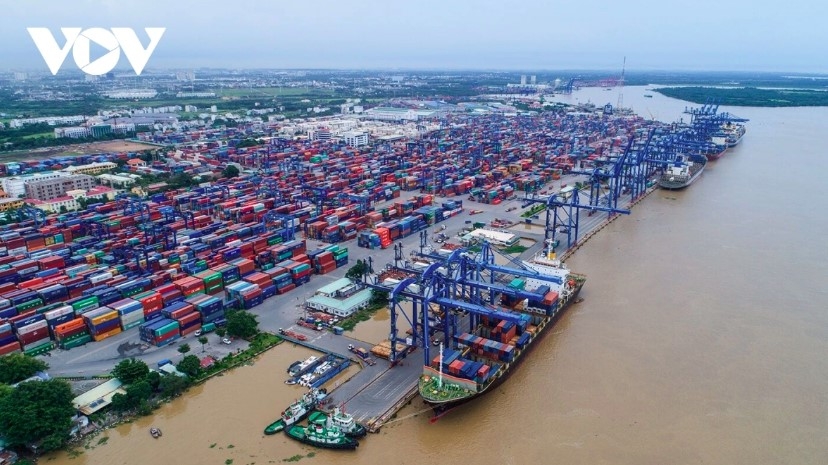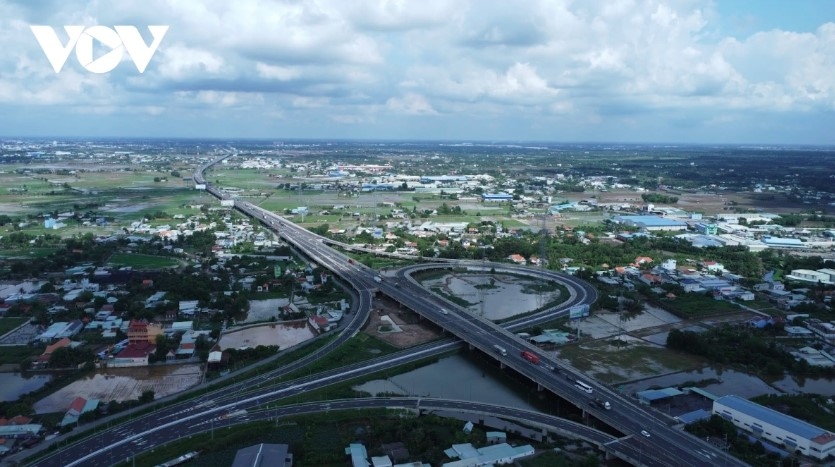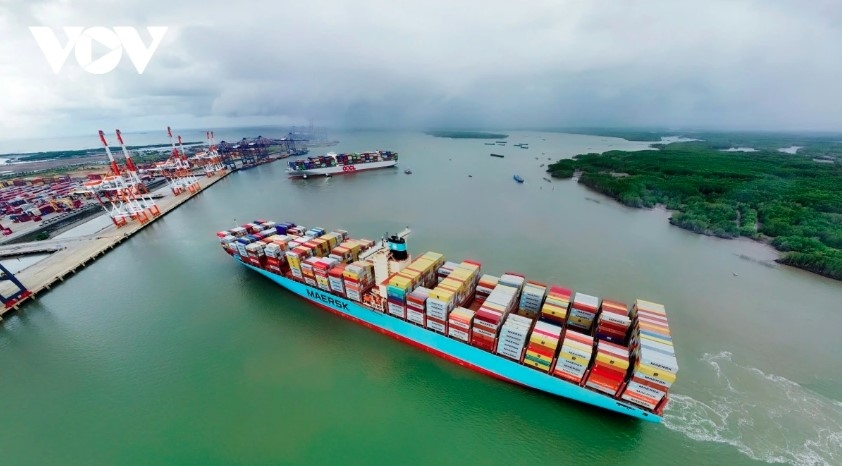
VOV.VN - Ho Chi Minh City is enhancing regional logistics connectivity and supply chain development, targeting the world’s top 10 container ports and strengthening its role as a key driver of the southern economic region.

From Corps 20 to an integrated logistics ecosystem
The Ministry of National Defence has established the Marine Economic Corps (Corps 20) on the foundation of Saigon Military Port, marking a new stage for Saigon Newport Corporation. The unit combines defence and business activities, operating ports and logistics services, investing in industrial parks, sea-island tourism, and renewable energy.
Saigon Newport Corporation currently ranks 17th worldwide in container throughput, managing five major ports and 18 logistics centres, holding 70% of Ho Chi Minh City’s container market and 65% of the national total. Its development focuses include upgrading port and warehouse infrastructure, modernising Cat Lai and developing Cai Mep Ha downstream port, expanding the “open-port” model and inter-port cooperation, and investing in green, automated, and digital ports.
Colonel Nguyen Nang Toan, Secretary of the Party Committee and Deputy Commander of Corps 20, said these steps would help create an intelligent port model, supporting Ho Chi Minh City’s transformation into a modern mega-city and national economic-technology hub. “In peacetime, soldiers on the economic front must maintain efficient business operations and service quality. That is both a political-spiritual mission and a contribution to the competitiveness of Vietnamese goods, in line with the national target of 8% growth in 2025 and double-digit growth in the next term,” he said.
Regional connectivity for southern economic corridor
The city identifies logistics as one of its five key service sectors, aiming to cut costs, enhance competitiveness, and energise the southern key economic region. With 80% of goods flowing in and out of the city originating from neighbouring provinces, regional linkage is essential.

Major infrastructure projects are being implemented, including Ring Road 3, the Hiep Phuoc port-connector corridor, the Nguyen Duy Trinh-Cat Lai route, links with Dong Nai and Tay Ninh, and the HCM City-Moc Bai expressway.
Nguyen Thanh Toai, Deputy Head of Compensation and Resettlement under the city’s Department of Agriculture and Environment said, “To keep the project on schedule, resettlement cases should be treated as urgent strategic projects. Where no resettlement site is yet available, temporary housing must be arranged to ensure construction proceeds smoothly.”
Experts note that Ho Chi Minh City’s logistics network should function as a regional ecosystem connecting Cai Mep-Thi Vai port, Dong Nai’s industrial parks, Tay Ninh’s warehousing system, and the city’s control centre, helping cut logistics costs by 15-20% and improving collective competitiveness.
Can Gio ‘super port’ and ambition for the world’s top 10
Ho Chi Minh City plans to build the Can Gio International Transshipment Port with total investment exceeding US$7.2 billion and capacity of more than 10 million TEU per year, capable of handling the world’s largest container vessels. Once integrated into the regional system, the southern city aims to enter the global top 10 container ports.
The Cai Mep area offers exceptional advantages in berth length and deep-water access. Gemalink Port, the deepest-water terminal cluster in Vietnam, is among only 19 ports globally capable of serving vessels up to 250,000 DWT (24,000 TEU).
Under the new plan, the SSIT-Gemalink-Cai Mep Ha berth will extend 3.5 km, and the full CMIT-Cai Mep Ha downstream corridor could reach 22 km, a record length worldwide.
Cao Hong Phong, Deputy General Director of Gemalink Port, said: “The 22-kilometre berth connection, unprecedented globally, will allow flexible cargo movement between terminals, creating a major operational edge. The city also proposes a network of barge terminals linking Binh Duong, Dong Nai, and the Southeast region to move cargo via inland waterways to Cai Mep.”

According to the plan, the Saigon River area will feature an international cruise and yacht terminal of 30,000 GT (about 1,200 passengers) at Phu My clearance height; another terminal of 60,000 GT at Mui Den Do will serve 1,600-2,200 passengers; and super-cruise ships carrying 6,000-8,000 passengers will dock at Bai Truoc in Vung Tau.
Chairman of the Ho Chi Minh City People’s Committee Nguyen Van Duoc said the city would hire an international consultant to coordinate with domestic agencies to plan three strategic development zones: Ho Chi Minh City as a financial, service, and high-tech centre; Binh Duong as a high-tech industrial hub; and Vung Tau as a maritime-economy centre focusing on ports, tourism, clean energy, processing, and petrochemicals.
Aligned with the maritime economy, the Cai Mep-Can Gio system will form a modern logistics centre for the city and southern region. Under the master plan, all cargo ports in the city will be relocated to Thi Vai-Cai Mep and Can Gio, while inner-city river terminals will remain for trans-shipment only.
“This zone will serve as a port and free-trade hub, concentrating river-transport activities. To ensure sustainable development, investments in rail, road and a fully synchronised logistics system are required, steering the zone into a modern maritime economy hub and attracting large investors,” Duoc said.
Ho Chi Minh City will continue investing in integrated transport infrastructure, including Ring Roads 3 and 4, radial corridors to Binh Duong, Tay Ninh and the Mekong Delta, and expanded urban rail links to Vung Tau.
Priority is also given to a container freight railway from Bau Bang (Binh Duong) to Cai Mep to support industrial goods transport from the East, aiming to lower logistics costs, reduce commodity prices and enhance enterprise competitiveness.
Viettel Military Industry and Telecoms Group (Viettel) on October 15 announced the launch of Unitel Logistics in Laos, marking its strategic expansion into the logistics and international transportation infrastructure sector as it moves towards becoming a global technology corporation.
Bình luận
Bình luận của bạn sẽ được xét duyệt trước khi đăng